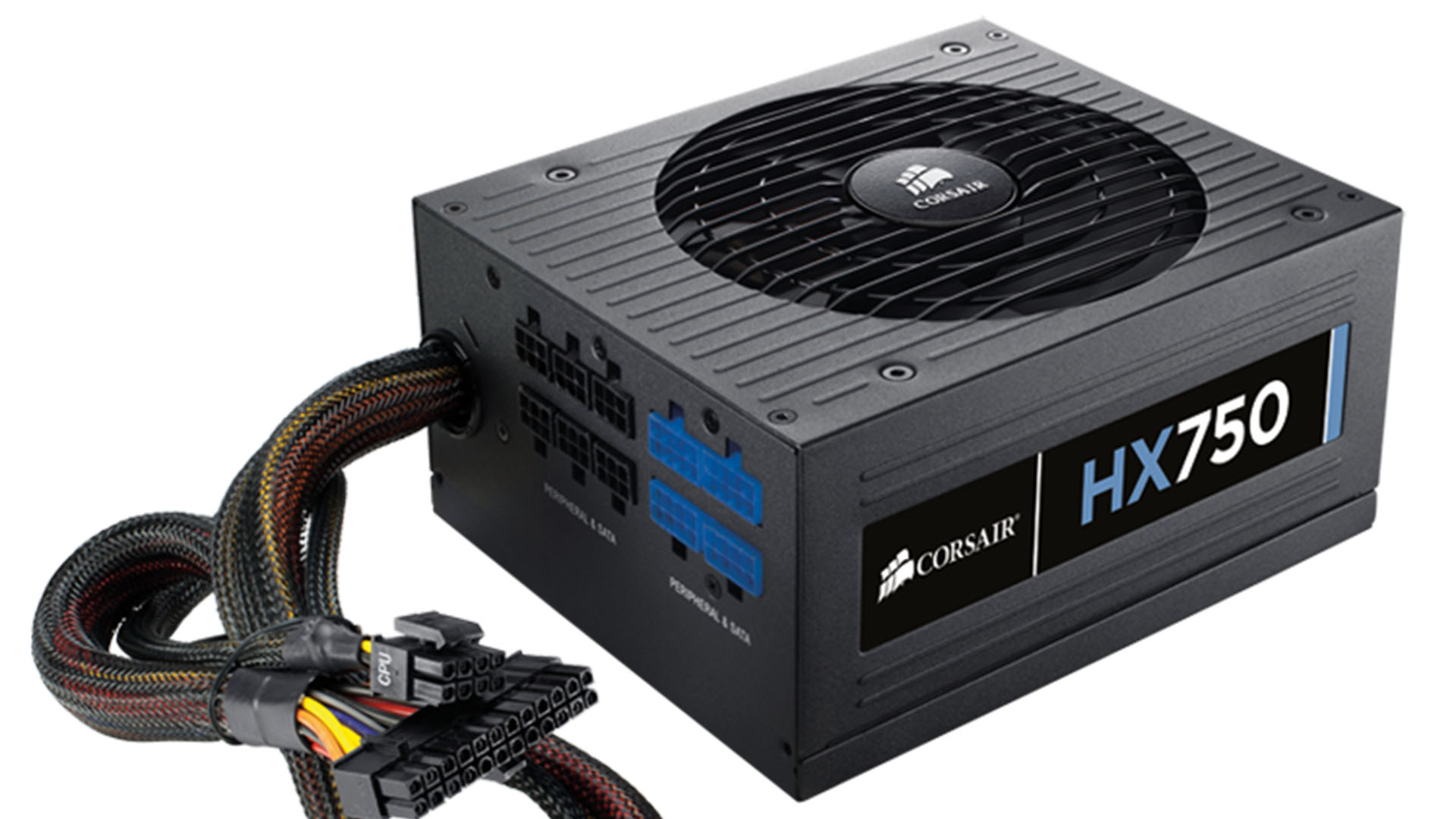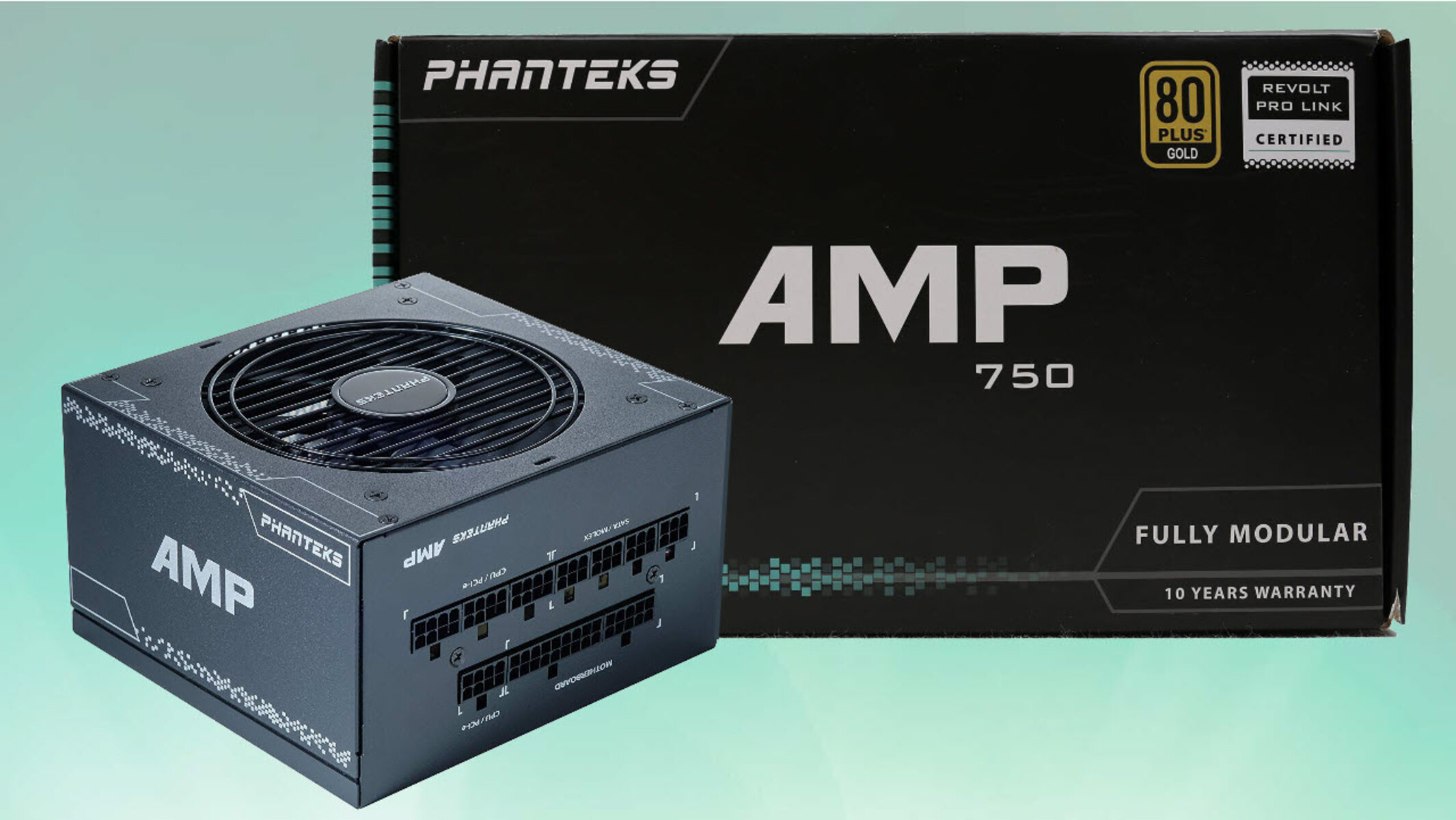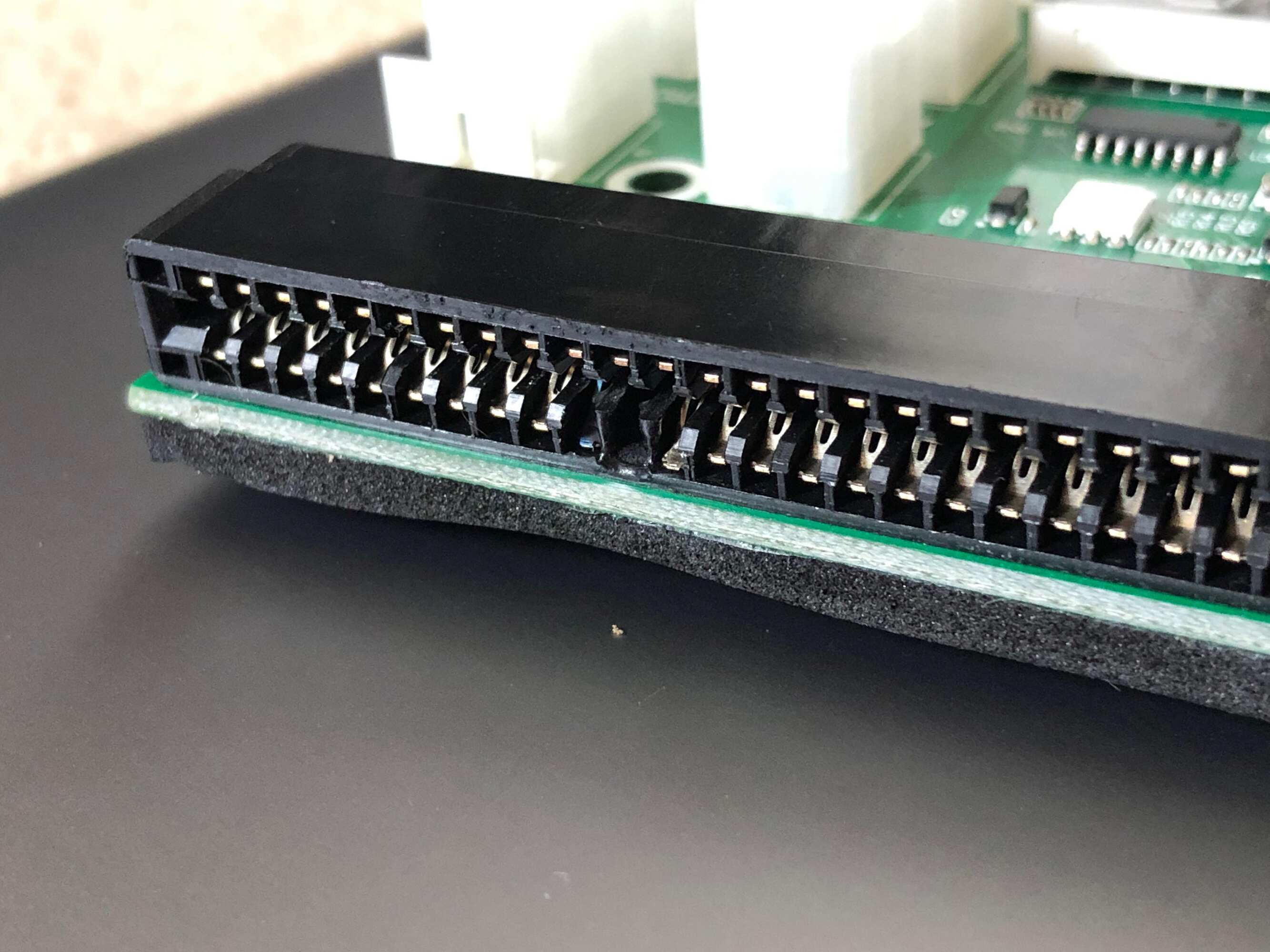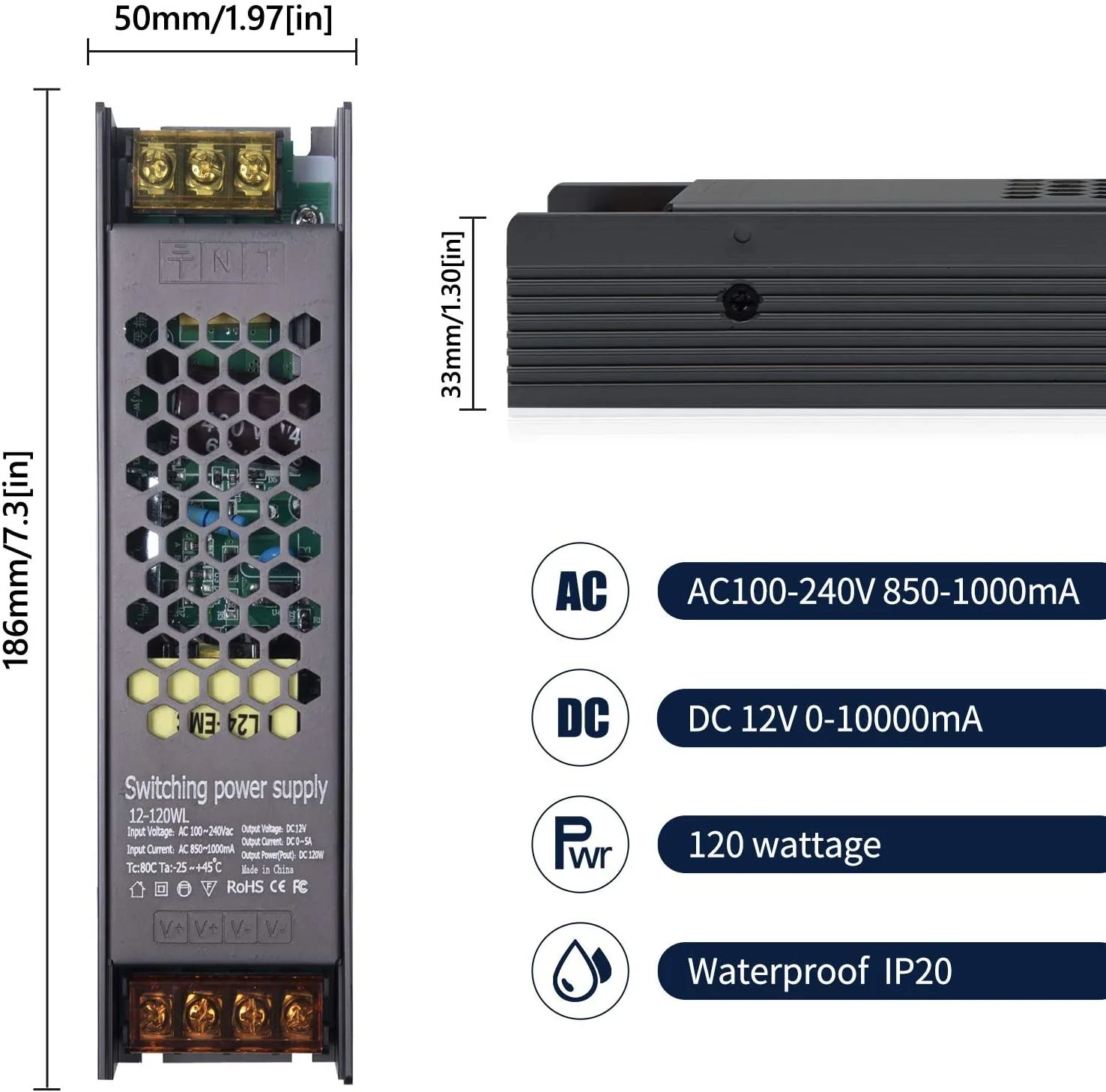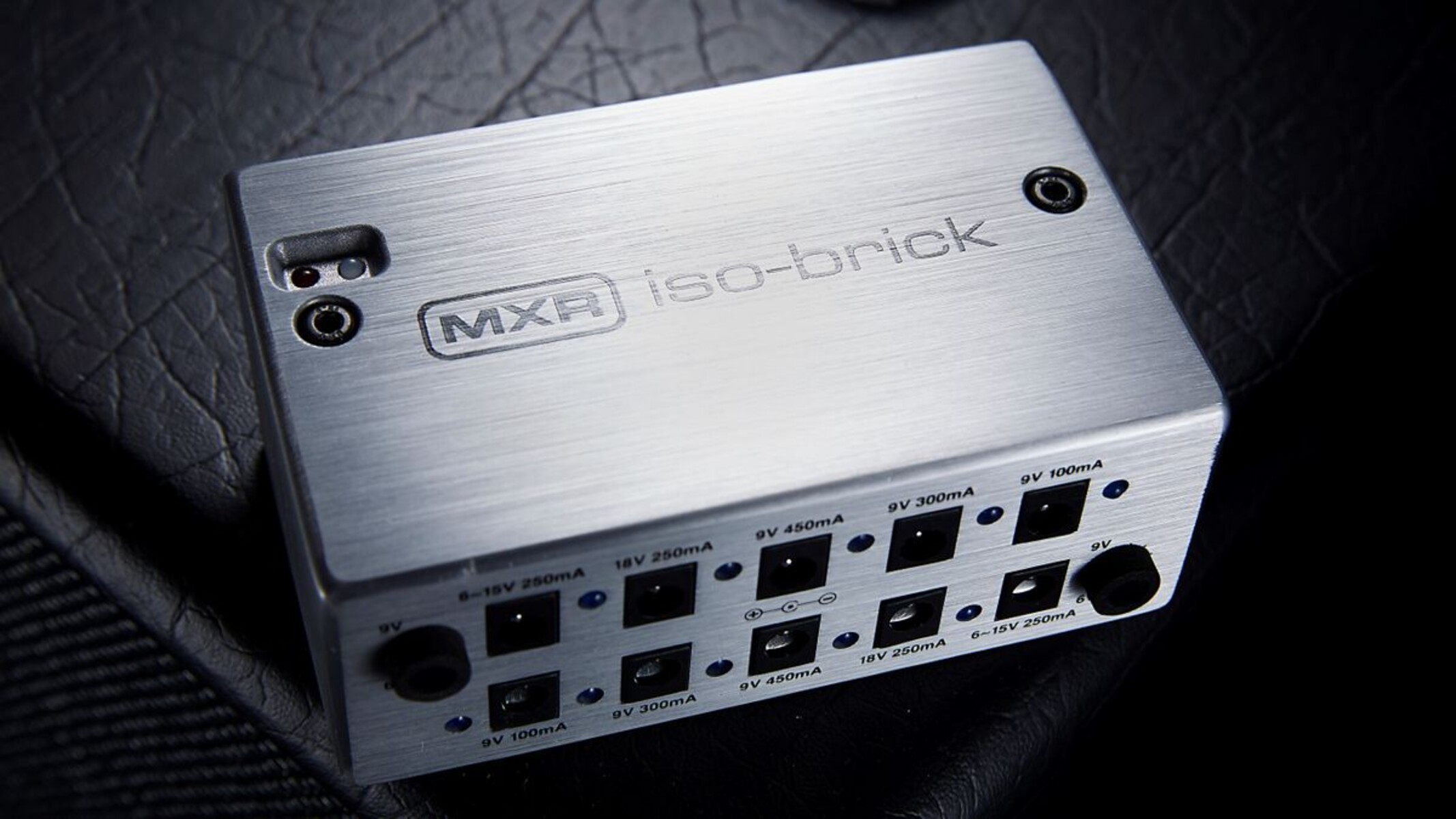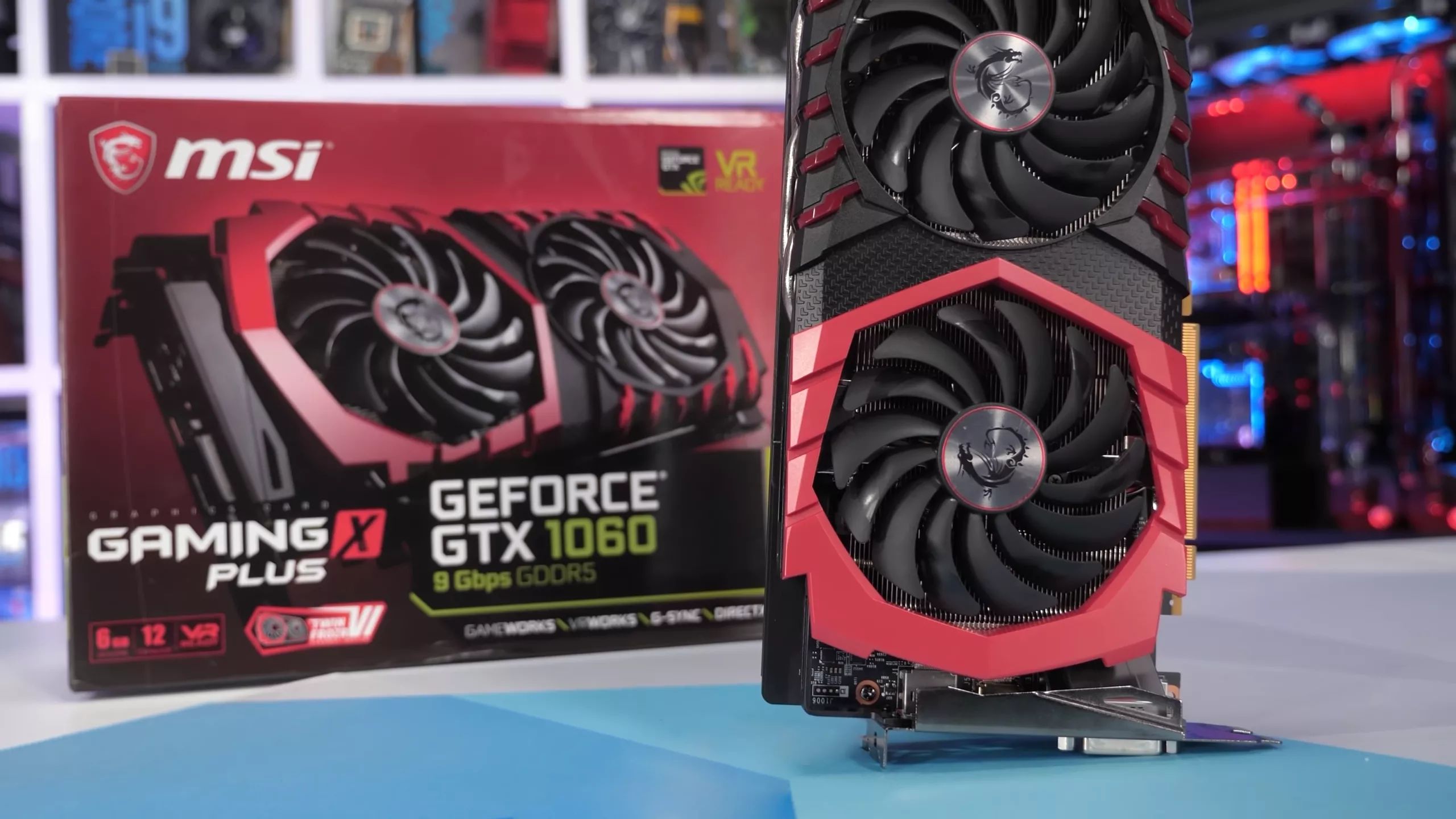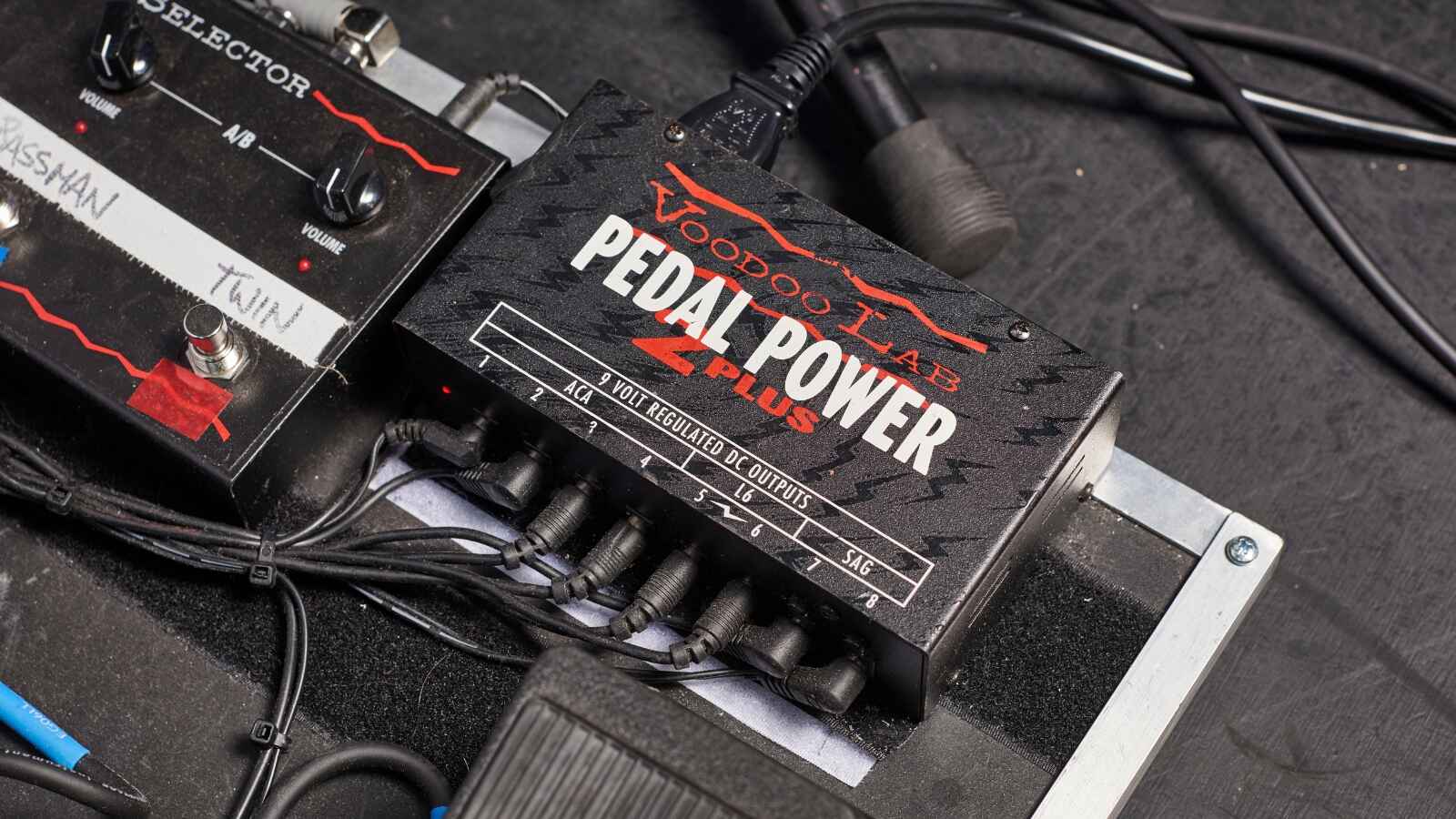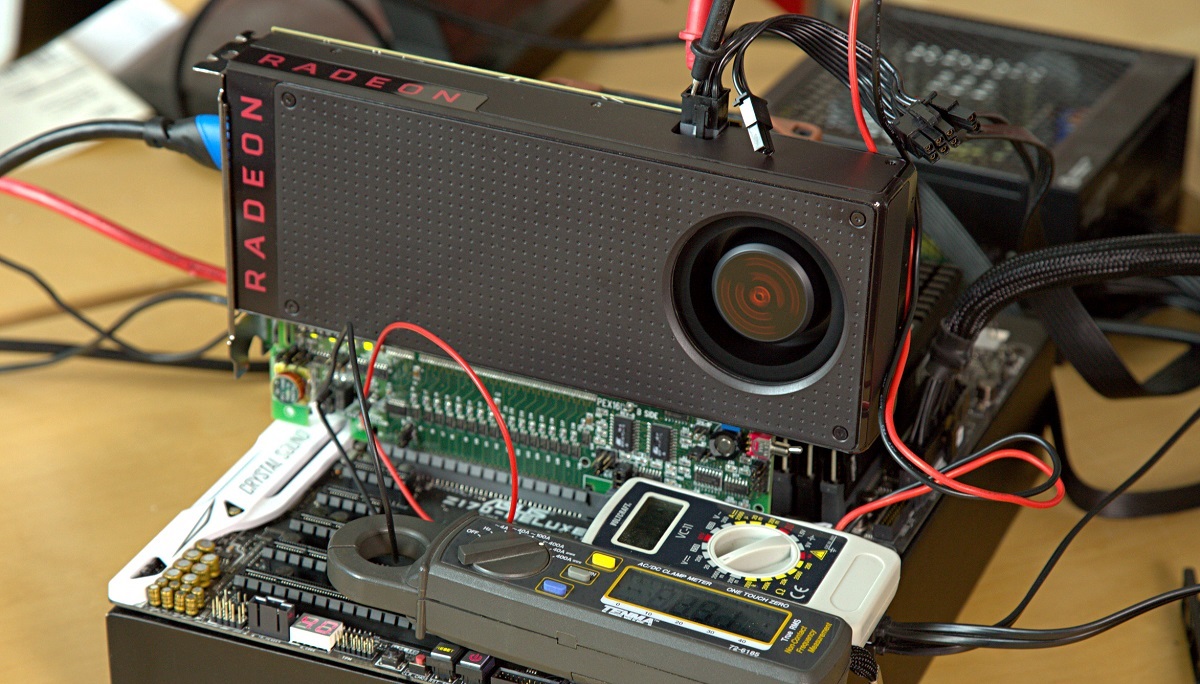Introduction
When it comes to building or upgrading a computer system, choosing the right power supply unit (PSU) is a crucial decision. The PSU is responsible for providing the necessary power to all the components in your system, ensuring their proper functioning. But have you ever wondered how many amps a PSU can handle? Understanding the amp capacity of a PSU is essential to ensure that it can adequately power your system without any risks of overloading.
Before diving into the details, let’s clarify what a PSU actually is. A PSU is a hardware component that converts the alternating current (AC) power from an electrical outlet into direct current (DC) power that your computer components can use. It is typically installed inside the computer case and connects to the motherboard, delivering power to components like the processor, graphics card, and storage devices.
Now, let’s talk about amps. Amps, short for amperes, are the unit of measurement for electrical current. In simple terms, amps represent the rate at which electric charges flow through a conductor. In the context of a PSU, the amp capacity refers to the maximum amount of current the PSU can deliver to your computer components.
Determining the amp capacity of a PSU is crucial to avoid overloading it. Overloading can occur when the demand for power from your components exceeds what the PSU can handle. This can result in a variety of issues, including system instability, component damage, or even causing the PSU itself to fail.
There are several factors to consider when determining the amp capacity of a PSU. Firstly, you need to assess the power requirements of each component in your system. Different components have varying power needs, and it’s important to add up these individual requirements to get an estimate of the total power needed.
Another factor to consider is PSU efficiency. PSU efficiency refers to how effectively the PSU converts AC power to DC power. Higher efficiency means less power is wasted as heat, resulting in more power being available for your components. This can impact the amp capacity of the PSU, as a more efficient PSU can deliver more current without overheating.
Understanding the amp capacity of a PSU is vital when selecting the right PSU for your system. By ensuring that the PSU can handle the necessary amps, you can minimize the risk of overloading and protect your components from damage. In the next section, we will explore the common amp draw for different components and further discuss the risks and consequences of overloading a PSU.
What is a PSU?
A power supply unit (PSU) is a fundamental component of a computer system. It is responsible for converting the alternating current (AC) power from your electrical outlet into the direct current (DC) power that your computer components need to operate. Without a PSU, your computer would not be able to function.
The primary function of a PSU is to distribute power to all the components in your computer system, including the motherboard, processor, graphics card, hard drive, and other peripheral devices. It ensures that each component receives the appropriate voltage levels and stable power supply to operate efficiently and reliably.
PSUs come in different sizes and wattage capacities to accommodate various types of computer systems. They are typically categorized based on the form factor, such as ATX, Micro ATX, or SFX, to ensure compatibility with the corresponding computer cases.
PSUs consist of several important components that work together to provide the necessary power. The main components include:
- Transformers and Rectifiers: These components convert the high voltage alternating current from the wall outlet into lower voltage direct current.
- Capacitors: Capacitors store and supply power to the various components, ensuring a steady and reliable power flow.
- Voltage Regulators: Voltage regulators regulate and stabilize the output voltage, preventing fluctuations that could potentially damage the components.
- Connectors and Cables: PSU connectors and cables provide the physical connection between the PSU and the components, ensuring efficient power delivery.
- Cooling System: PSUs are equipped with fans or other cooling mechanisms to dissipate heat generated during operation, preventing overheating and ensuring longevity.
Additionally, modern PSUs often include various protection features, such as overvoltage protection, undervoltage protection, short circuit protection, and overcurrent protection. These safety measures help safeguard your computer components from potential damage due to power fluctuations or voltage abnormalities.
Overall, a PSU is a vital component of any computer system. It ensures that the power supply to your components is stable, secure, and within the required specifications. When selecting a PSU for your system, it is important to consider the power requirements of your components and choose a PSU with sufficient wattage and amp capacity to meet those needs. Now that we understand what a PSU is, let’s move on to understanding amps and how they relate to PSU capabilities.
What is an Amp?
An amp, short for ampere, is the unit of measurement for electrical current. It represents the rate at which electric charges flow through a conductor. In the context of a power supply unit (PSU), understanding amps is essential to determine its capacity and ensure that it can deliver enough current to power your computer components.
An ampere is defined as one coulomb of charge passing through a point in one second. To put it simply, it measures the quantity of electric charge that flows through a circuit in a given time frame. The higher the amperage, the more electric current is flowing through the circuit.
Electric current is analogous to the flow of water through a pipe. The ampere measures the volume or amount of water passing through the pipe per unit of time. If we relate it to a PSU, the amps indicate the amount of electrical current flowing from the PSU to the various components in your computer system.
The amp capacity of a PSU is crucial because it directly impacts the ability to power components effectively. Each component in your computer system has a specific power requirement, usually given in watts. To ensure optimal performance, the PSU needs to provide enough amps to meet the total power requirements of all connected components.
It’s important to note that different components have varying amp needs. For example, a high-performance graphics card or a power-hungry CPU may require more amps compared to a standard hard drive or memory module. Therefore, when selecting a PSU, it’s crucial to consider the specific power requirements of your components and ensure that the PSU’s amp capacity can meet those needs.
It’s worth mentioning that PSUs often come with multiple 12V rails. These rails are separate circuits within the PSU that distribute power to different components. Each rail has its amp capacity, and it’s important to understand how the amps are distributed across the rails to ensure a balanced power delivery to the components.
Overall, amps are a crucial factor in determining the capability of a PSU. They represent the amount of electrical current flowing from the PSU to power your computer components. By understanding the amp requirements of your components and selecting a PSU with an adequate amp capacity, you can ensure stable and reliable power distribution, preventing potential issues such as system instability or component damage.
Determining the Amp Capacity of a PSU
When choosing a power supply unit (PSU) for your computer system, it’s crucial to determine the amp capacity to ensure that it can handle the power requirements of your components. The amp capacity of a PSU refers to the maximum amount of electrical current it can deliver to your computer components. By understanding how to determine the amp capacity, you can select a PSU that meets the needs of your system.
To determine the amp capacity of a PSU, you need to assess the power requirements of each component in your system. Most computer components have their power requirements specified in watts, which is a measure of the amount of power consumed. To convert watts to amps, you can use the formula: amps = watts / volts.
Since PSUs typically provide multiple voltage outputs, such as 3.3V, 5V, and 12V, it’s important to consider the specific voltage levels for each component. The 12V rail is particularly important, as many components, like the CPU and graphics card, draw most of their power from this rail.
Start by identifying the power requirements for each component and convert them to amps using the formula above. For example, if your CPU requires 95W at 12V, you can calculate the amps as follows: 95W / 12V = 7.92A. Do this for all your components and add up the amp values to get an estimate of the total amp requirement for your system.
Keep in mind that it’s always a good idea to leave some headroom when it comes to PSU amp capacity. Components may have peak power demands, and it’s crucial to have some extra capacity to handle those spikes. It is recommended to have a PSU that can handle at least 20% more amps than your estimated total requirement.
Another factor to consider when determining the amp capacity is the efficiency of the PSU. PSU efficiency refers to how effectively it converts AC power from the wall outlet into DC power for your components. Higher efficiency means less power is wasted, resulting in more available amps for your components. It’s generally a good idea to choose a PSU with at least 80% efficiency, as this ensures maximum power delivery and minimizes waste.
Lastly, it’s important to consider the 12V rail distribution in multi-rail PSUs. Some PSUs have multiple 12V rails, each with its amp capacity. Ensure that the rail distribution aligns with your component’s power requirements. For example, if your CPU and graphics card require high amps from the 12V rail, make sure the PSU can accommodate that.
By following these steps and considering factors such as component power requirements, PSU efficiency, and rail distribution, you can accurately determine the amp capacity needed for your PSU. This will ensure that your computer system receives adequate power, avoiding the risk of overloading the PSU and protecting your components from potential damage.
Factors to Consider
When selecting a power supply unit (PSU) for your computer system, there are several important factors to consider. These factors will help ensure that you choose a PSU that can meet the power requirements of your components and provide reliable and efficient power delivery. Let’s explore the key factors to consider when selecting a PSU.
1. Wattage: The wattage of a PSU indicates its maximum power output. It’s essential to choose a PSU with sufficient wattage to meet the power requirements of your components. Consider the power consumption of your CPU, graphics card, storage devices, and other peripherals to determine the required wattage.
2. Amp Capacity: The amp capacity of a PSU refers to the maximum electrical current it can supply to your components. Different components have varying amp needs, so it’s crucial to ensure that the PSU can deliver enough amps to power all your components effectively and avoid overloading.
3. Efficiency: PSU efficiency refers to how effectively it converts AC power from the wall outlet into DC power for your components. Higher efficiency means less power is wasted as heat and more is delivered to your components. Look for PSUs with high efficiency ratings, such as 80 Plus Bronze, Silver, Gold, or Platinum, to ensure optimal power delivery.
4. Modular vs. Non-modular: PSUs come in modular and non-modular variants. Modular PSUs allow you to detach unnecessary cables, resulting in a cleaner and more organized system. Non-modular PSUs have fixed cables, which can lead to cable clutter. Consider your system’s cable management needs when choosing between these options.
5. PSU Size and Form Factor: Ensure that the physical dimensions of the PSU are compatible with your computer case. Common PSU form factors include ATX, Micro ATX, and SFX. Choosing the correct form factor for your case ensures a proper fit and eliminates any potential compatibility issues.
6. Manufacturer and Warranty: Consider reputable PSU manufacturers known for their high-quality and reliable products. Look for PSUs with a minimum warranty of three years to give you peace of mind regarding product quality and longevity.
7. Noise Level: PSUs come with different fan configurations and noise levels. Consider the noise tolerance level for your system and choose a PSU with appropriate fan noise ratings or features like fanless operation or semi-passive modes to minimize noise.
8. Overvoltage and Overload Protection: Ensure that the PSU has built-in protection features like overvoltage and overload protection. These safety mechanisms protect your components from potential damage due to power surges or excessive power draw.
By considering these factors, you can make an informed decision when selecting a PSU that meets the power requirements of your computer system. This will ensure reliable and efficient power delivery, maximum component compatibility, and better overall system performance.
PSU Efficiency
When choosing a power supply unit (PSU) for your computer system, one important factor to consider is the PSU’s efficiency. PSU efficiency refers to how effectively it converts alternating current (AC) power from the electrical outlet into direct current (DC) power that your components can use. Higher PSU efficiency not only translates to better power utilization but also reduces energy waste and improves overall system performance.
PSU efficiency is typically measured and rated by organizations such as 80 Plus. The 80 Plus certification program provides efficiency ratings based on different levels: 80 Plus, 80 Plus Bronze, 80 Plus Silver, 80 Plus Gold, 80 Plus Platinum, and 80 Plus Titanium. These ratings determine how efficiently the PSU can convert AC power to DC power.
Choosing a PSU with higher efficiency provides several benefits. Firstly, it reduces energy waste. A more efficient PSU converts a higher percentage of the AC power it receives into usable DC power, minimizing the amount of electricity lost as heat during the conversion process. This not only conserves energy but also reduces the strain on your electrical system.
Secondly, a more efficient PSU helps achieve better system stability. As less energy is wasted as heat, the PSU generates less heat, resulting in a cooler and more stable computer system overall. This is particularly important for systems with demanding components that generate significant heat, such as gaming computers or workstations.
Additionally, PSU efficiency can have an impact on the lifespan of your components. A more efficient PSU provides cleaner and more stable power to your components, reducing the likelihood of voltage fluctuations or power surges. This helps protect sensitive electronic components, such as CPUs, GPUs, and motherboards, and can contribute to their longevity and reliability.
It’s crucial to note that PSU efficiency is not a static value. It can vary depending on the load placed on the PSU. Most PSUs operate at their peak efficiency when the system is under 50-80% of its maximum power capacity. Therefore, it is recommended to choose a PSU with a wattage rating suitable for your system’s power requirements to operate at its optimal efficiency range.
While PSUs with higher efficiency ratings generally come at a higher price, the long-term cost savings and performance benefits they offer justify the investment for many users. By choosing a PSU with higher efficiency, you not only reduce energy consumption but also create a more reliable and stable computer system.
It’s important to consider PSU efficiency as a crucial factor when selecting a power supply unit for your computer system. Explore PSUs with higher efficiency ratings to ensure efficient power utilization, better system stability, reduced energy waste, and improved overall performance.
Importance of Amp Capacity
The amp capacity of a power supply unit (PSU) plays a vital role in the functionality and stability of your computer system. Understanding and choosing a PSU with an adequate amp capacity is crucial to ensure that your components receive the required amount of electrical current to operate optimally. Let’s explore the importance of amp capacity in a PSU and its impact on your system.
Components in a computer system, such as the CPU, graphics card, and storage devices, have specific power requirements measured in watts. To determine the amp capacity needed, you can convert the power requirement (watts) to amps using the formula: amps = watts / volts. This calculation provides an estimate of the electrical current required to power each component.
Having a PSU with sufficient amp capacity is essential to avoid overloading the system. Overloading occurs when the power draw from your components exceeds what the PSU can handle, resulting in various issues such as system instability, crashes, or even component damage. By selecting a PSU that can deliver the required amps, you ensure a stable and reliable power supply to your components, minimizing the risk of overloading.
Furthermore, choosing a PSU with the right amp capacity ensures optimal performance of your computer system. Insufficient amp capacity can lead to underpowering, causing components to operate at lower frequencies or not function properly. This can result in decreased performance, slower processing speeds, or even system failures. By providing adequate amps, the PSU enables your components to operate efficiently and at their intended performance levels.
It’s crucial to note that different components have varying amp requirements. High-performance graphics cards or power-hungry CPUs may demand higher amps than standard peripheral devices. Therefore, understanding the amp needs of your specific components and choosing a PSU with an appropriate amp capacity is essential to meet their power requirements and ensure smooth operation.
Moreover, having a PSU with sufficient amp capacity allows for future upgrades and flexibility. If you plan to add more power-hungry components in the future, such as additional storage drives or a more powerful graphics card, having headroom in terms of amp capacity ensures that your PSU can handle the increased power requirements without the need for an immediate upgrade.
By considering the amp capacity of your PSU, you prioritize the stability, performance, and longevity of your computer system. It minimizes the risks of overloading and underpowering, ensuring that your components operate optimally. It also provides the flexibility to accommodate future upgrades without the need for a PSU replacement. Considering the importance of amp capacity during the PSU selection process is crucial for building a reliable and efficient computer system.
Common Amp Draw for Different Components
Understanding the common amp draw for different components in a computer system is crucial when determining the amp capacity needed for a power supply unit (PSU). Each component has specific power requirements, and knowing their typical amp draw helps ensure that the PSU can provide sufficient electrical current. Let’s explore the common amp draw for different components found in a typical computer system.
CPU: The central processing unit (CPU) is the brain of the computer. The amp draw of the CPU varies depending on its model and power requirements. Typically, high-end CPUs designed for gaming or intensive tasks may draw around 10 to 15 amps under full load, while more power-efficient CPUs may draw around 5 to 8 amps.
Graphics Card: The graphics card, also known as the GPU, is responsible for rendering visuals and handling graphics-intensive tasks. Graphics cards can have varying amp draw depending on their model, design, and power requirements. High-performance, gaming-oriented graphics cards may draw anywhere from 10 to 20 amps or even higher under full load.
Motherboard: The motherboard serves as the hub for all the computer’s components. While the motherboard itself doesn’t consume a substantial amount of power, it is important to consider its amp draw to ensure overall power stability. On average, motherboards draw around 1 to 5 amps, depending on their features and the components connected to them.
Memory (RAM): Random-access memory (RAM) is responsible for temporarily storing data that the CPU needs to access quickly. The amp draw of RAM modules is minimal and typically ranges from 0.1 to 0.3 amps per module, depending on the type and speed of the RAM.
Storage Devices: Hard disk drives (HDDs) and solid-state drives (SSDs) are the primary storage devices in a computer system. Their amp draw is generally low, ranging from 0.5 to 1.5 amps for HDDs and 0.1 to 0.5 amps for SSDs, depending on their capacity and activity level.
Peripherals: Peripherals such as keyboards, mice, and external devices draw minimal amounts of power and typically fall within the range of 0.1 to 0.5 amps.
It’s essential to note that these are general ranges for amp draw based on typical configurations. The actual amp draw for each component may vary depending on various factors, including the specific model, power settings, overclocking, and system workload.
When calculating the total amp draw for a system, it’s necessary to consider the highest potential amp draw under full load for each component. This ensures that the PSU’s amp capacity is sufficient to handle the maximum power requirements of the entire system.
To determine the amp capacity needed for a PSU, add up the estimated amp draw for each component based on their maximum requirements. Consider leaving some headroom for future upgrades or system stability, aiming for a PSU with a capacity that exceeds the calculated total amp draw by approximately 20%.
Understanding the common amp draw for different components in a computer system is vital when selecting a PSU with adequate amp capacity. This knowledge enables you to choose a PSU that can reliably and efficiently power your components, ensuring optimal performance and stability for your computer system.
Overloading a PSU: Risks and Consequences
Overloading a power supply unit (PSU) occurs when the demand for power from your computer components exceeds the PSU’s capacity to deliver it. This can pose significant risks and consequences to both the PSU and the overall functionality of your computer system. Understanding the dangers associated with overloading a PSU is essential to prevent potential damage and ensure the reliable operation of your components.
When a PSU is overloaded, it struggles to provide the necessary electrical current to all connected components. This can lead to a range of issues, including:
1. System Instability: Overloading a PSU can cause system instability, leading to unexpected crashes, freezes, or spontaneous shutdowns. This occurs when the components do not receive the sufficient power they need to operate reliably.
2. Component Damage: Overloading a PSU puts strain on the components, specifically those that rely on the PSU for power, such as the CPU, graphics card, and motherboard. Insufficient power supply can cause these components to function improperly or become damaged over time, impacting their lifespan and overall performance.
3. Reduced Performance: When a PSU is overloaded, it may not be able to provide the required power to the components, resulting in reduced performance. CPU-intensive tasks may take longer to complete, graphical applications may experience lag or stutter, and overall system responsiveness may be diminished.
4. PSU Failure: Overloading a PSU significantly increases the risk of PSU failure. The excessive stress placed on the PSU can cause components to overheat, capacitors to fail, or other internal damage to occur. PSU failure can lead to a complete loss of power, potentially resulting in data loss or damage to other components.
5. Fire Hazard: In extreme cases, overloading a PSU can generate excessive heat, creating a fire hazard. Overheated components, damaged cables, or a stressed PSU may lead to electrical sparks or small fires inside the computer system, putting both the system and surrounding environment at risk.
To avoid the risks and consequences of overloading a PSU, it’s crucial to select a PSU that is capable of providing sufficient wattage and amp capacity for your computer system. Properly calculating the power requirements of your components, considering their peak power demands, and choosing a PSU with a capacity that exceeds those requirements are key steps in preventing overloading.
By investing in a high-quality PSU with ample capacity, you ensure a stable and reliable power supply to your components. This not only protects your system from potential damage but also promotes optimal performance and longevity for your computer system as a whole. Overloading a PSU is a risk that should not be taken lightly, and taking the necessary precautions to prevent it is crucial for a successful and trouble-free computing experience.
Conclusion
Choosing the right power supply unit (PSU) for your computer system is crucial to ensure the reliable and efficient operation of your components. Understanding factors such as amp capacity, PSU efficiency, and the power requirements of your system’s components is essential for making an informed decision. By considering these factors, you can select a PSU that provides adequate power, promotes optimal performance, and minimizes the risk of overloading or underpowering.
The amp capacity of a PSU determines its ability to deliver the required electrical current to your components. Calculating the amp draw for each component and choosing a PSU that exceeds the total amp requirement is crucial to avoid overloading and ensure stable power delivery. Additionally, considering factors like PSU efficiency helps minimize wasted energy, reduce heat generation, and improve overall system stability.
By selecting a PSU with the appropriate wattage, amp capacity, and efficiency, you can protect your components from potential damage, ensure optimal performance, and create a reliable and long-lasting computer system. Additionally, considering factors like modularity, size compatibility, manufacturer reputation, and warranty coverage can further enhance your PSU selection process.
Remember to consider the unique power requirements of your components, taking into account their specific amp draw and peak power demands. Leaving headroom for future upgrades and system stability is also recommended to ensure that your PSU can handle any increased power requirements.
Ultimately, investing in a high-quality PSU is a wise decision, as it serves as the foundation for your computer system’s power distribution. Prioritizing the amp capacity and efficiency of the PSU ensures that your components receive the necessary power without compromising performance or risking system instability.
By carefully considering the factors discussed in this article and making an informed decision, you can choose a PSU that meets your system’s power requirements, protects your components, and provides a stable and efficient power supply for your computer system.









